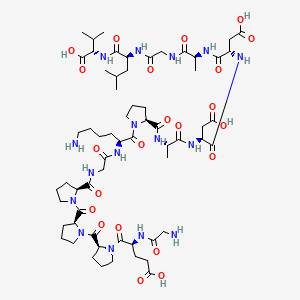
BPC-157 Muscle Repair: How It Accelerates Tendon and Muscle Healing
Share
BPC-157 muscle repair has garnered significant attention in scientific communities for its powerful influence on tendon and muscle healing after injury. Research shows that BPC-157 accelerates repair processes by modulating cellular mechanisms crucial for tissue recovery. For athletes or anyone recovering from musculoskeletal damage, understanding how this peptide enhances healing can offer valuable insights into improved recovery outcomes. In this article, we focus on evidence-based mechanisms through which BPC-157 promotes muscle and tendon regeneration, paving the way for potential therapeutic developments.
Understanding BPC-157 Muscle Repair Mechanisms
The Role of Growth Hormone Receptors in Healing
One of the key mechanisms through which BPC-157 muscle repair operates is by increasing the expression of growth hormone receptors (GHR) in tendon and muscle cells. Studies indicate that BPC-157 dose-dependently upregulates GHR on tendon fibroblasts, which are essential cells involved in tissue repair.
This upregulation enhances the cells' responsiveness to growth hormone, a critical anabolic hormone that promotes cellular proliferation, collagen synthesis, and overall tissue regeneration. With more receptors available, the healing cells react more robustly to growth hormone’s signals, accelerating cell proliferation and matrix remodeling necessary for tendon and muscle restoration.
Figure 1 BPC-157 influences the proliferation and cell cycle distribution of HUVECs.
Activation of Key Cellular Signaling Pathways
Upon binding growth hormone, the increased receptors activate intracellular signaling cascades such as the Janus kinase 2 (JAK2) pathway. Research shows that BPC-157-treated cells exhibit heightened JAK2 phosphorylation, a marker of pathway activation that leads to enhanced cellular functions related to healing. Activated JAK2 induces proliferating cell nuclear antigen (PCNA), a critical marker for cell replication, which boosts tendon fibroblast growth during repair phases.
Enhancement of Angiogenesis and Blood Flow
Promoting Vascular Growth in Injured Tissue
A crucial limiting factor in tendon and muscle healing is insufficient blood supply due to the tissues' naturally low vascularity. Studies demonstrate that BPC-157 facilitates angiogenesis—the formation of new blood vessels—by activating vascular endothelial growth factor receptor 2 (VEGFR2) and related VEGFR2-Akt-eNOS signaling pathways. This angiogenic effect improves nutrient delivery and oxygenation to injured sites, promoting faster and more effective repair.
Impact of Improved Blood Flow on Recovery
Enhanced blood flow not only accelerates removal of cellular debris and inflammatory mediators but also supports the infiltration of reparative cells. By supporting vasculature recovery in ischemic muscle, BPC-157 creates an environment conducive to sustained tissue restoration, preventing chronic injury or fibrosis.
Figure 2 BPC-157 increased wound reepithelialization and collagen content of granulation tissue.
Tendon Repair Efficacy and Structural Restoration
Biomechanical Improvements Observed in Research
Animal research comparing treated and untreated tendon injuries consistently shows that BPC-157 muscle repair improves biomechanical properties of tendons during healing. For example, studies on Achilles tendon transections in rodent models reveal increased load to failure and improved functional indices after BPC-157 administration, suggesting a stronger, more resilient tendon matrix forms during repair.
Cell Migration and Fibroblast Activity
Although BPC-157 does not directly increase tendon fibroblast proliferation in vitro, it enhances fibroblast migration and survival. This migratory activity is vital as fibroblasts are responsible for collagen deposition and extracellular matrix formation, which reconstruct the tendon’s architecture following injury.
Benefits for Skeletal Muscle Healing
Advancement Beyond Tendon Repair
Beyond tendon tissue, studies have demonstrated that BPC-157 accelerates skeletal muscle healing after traumatic injury. Research with crush injuries and muscle transection models indicate that BPC-157 expedites restoration of muscle function, reduces proteolysis, and assists in regaining normal tissue morphology.
Functional Recovery and Enzymatic Activity
Enzyme activity markers related to muscle damage such as creatine kinase and lactate dehydrogenase decrease more rapidly in BPC-157-treated animals, correlating with improved muscle integrity and contractile ability. This supports the peptide’s potential for systemic muscle recovery applications.
Figure 3 BPC-157 promoted the expression of VEGF-a in wounded skin tissues.
Application Modalities and Stability of BPC-157
Versatile Delivery Options
Research underscores that BPC-157 exerts beneficial effects through multiple delivery routes including oral, topical, and systemic administration. This versatility is important because it offers potential for diverse therapeutic approaches without loss of efficacy.
Stability and Sustained Effects
BPC-157's peptide structure grants it remarkable stability compared to other growth factors, resisting enzymatic degradation and sustaining bioactivity. Studies note that its effects on cell receptor expression and angiogenesis can persist several days post-treatment, which is significant for prolonged healing phases in tendon and muscle repair.
Potential Interaction with Conventional Treatments
Counteracting Corticosteroid-Related Healing Impairments
Notably, BPC-157 muscle repair research highlights the peptide's ability to mitigate the negative impact of corticosteroids on tendon and muscle healing. Corticosteroids, commonly used to reduce inflammation, are known to impair tissue regeneration. BPC-157 appears to counteract these deleterious effects, enhancing biomechanical outcomes even in the presence of corticosteroid treatment.
Supporting a Multi-Modal Recovery Strategy
This capacity to synergize or protect against typical medication drawbacks positions BPC-157 as a promising adjunct in comprehensive injury management protocols, pending further clinical validation.
Safety Profile and Current Research Limitations
Low Toxicity and Side Effect Evidence
To date, research indicates that BPC-157 muscle repair displays a high safety profile with no known significant toxicity or adverse reactions in animal models. Its origin as a gastric peptide fragment likely contributes to its compatibility within physiological systems.
Need for Human Clinical Trials
Despite promising preclinical findings, robust human clinical trials remain limited. Current research is heavily based on small animal studies, and further investigation is necessary to confirm efficacy, optimal dosing, and delivery methods in humans. Pending results, BPC-157 holds potential as a therapeutic strategy for musculoskeletal injuries.
Summary of BPC-157 Muscle Repair Benefits and Next Steps
In summary, BPC-157 muscle repair research reveals a multifaceted healing process involving enhancement of growth hormone receptor expression, activation of pro-healing cellular pathways, promotion of angiogenesis, and improved biomechanical and functional recovery of tendon and muscle tissue. This peptide’s stability and broad application routes amplify its therapeutic potential, especially in difficult-to-heal soft tissues like tendons and skeletal muscle.
To explore how these findings translate to support your recovery or inform product selections, consider reviewing scientifically supported formulations that incorporate BPC-157 alongside other complementary peptides. Learn more about advanced peptide combinations that target musculoskeletal healing and regeneration to support optimal tissue repair and recovery.
BPC-157 muscle repair remains an evolving field with promising implications for accelerated, effective tendon and muscle healing.

